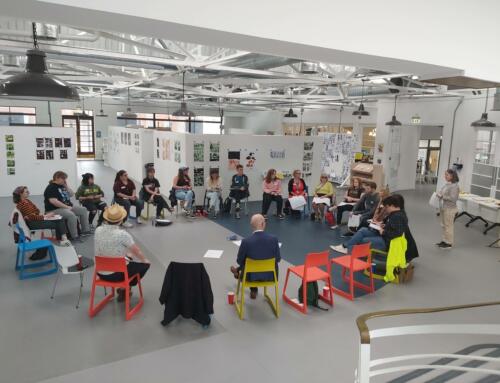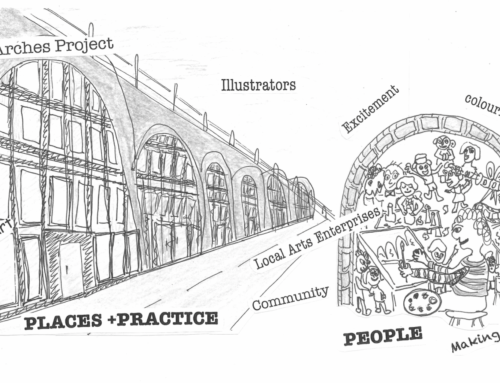Every organisation should have an element of volunteering, whether you’re the London 2012 Olympics or a start-up group looking to run a few events once or twice a year. Whatever you do, volunteering matters. It’s not just about saving money, or bringing in additional resources. It’s about attracting a group of people to work on specific projects, events or programmes – people who aren’t seeking paid employment, but want to do something for the love of it, or to learn new skills.
But there’s so much more to it than just wanting an extra pair of hands. Volunteering gives you the chance to inspire and engage with people from all walks of life – and gives them the chance to have a real impact on what you do.
My name is Tom, and I’ve worked for a number of third sector organisations where I’ve created volunteering programmes of various shapes and sizes, and also been on the other side of the fence as a volunteer.

What volunteering has taught me, and the organisations that I’ve worked with, is that it’s by far the most effective way to broaden the reach and personality of any organisation. With every new volunteer and every project that you engage them in, you get a rich mix of skills, perspectives and the chance to see new faces grow in confidence. Volunteers, when looked after, also become amazing ambassadors for what you do. Also, because they’re not on your payroll, they have different motivations and objectives. In turn, these will help you evaluate your own vision and mission.
Most small not-for-profit organisations explore volunteering as a way of bolstering existing resources, particularly when paid-for roles are stretching their budgets to the limit. Within larger organisations, volunteering is seen as a natural part of a wider strategic vision to enable them to:
- broaden participation
- engage with hard-to-reach communities
- help young people gain experience to enhance their employability
- forge relationships with corporate partners who want to offer volunteering as part of their people-development or CSR (corporate social responsibility) programmes
So, rather than just see volunteering as a way of bolstering your resources for specific projects, or seasonal hot spots when you need more people power, think about the long game. By mapping out a strategy, you’ll be able to think beyond your 1st year and be able to consider how a small number of volunteering opportunities in Year 1 could evolve into a larger, more structured programme in, say, 3-5 years.

Start off by keeping it manageable and self-contained. Remember, volunteering can become an all-consuming part of your day-to-day operations. So think small, but also think how you might want to broaden your offering as your organisation grows too.
As part of this whole process, have a go at coming up with a manifesto that explains what volunteering means to your organisation. This will help you set out some evaluation metrics that help you quantify success and the impact that volunteering makes on your organisation, and the people who are your volunteers.
Volunteering, within the context of opportunity and broadening reach, is a great way of demonstrating your values. Here’s what a volunteering vision might look like:
“Volunteering is a way that we can engage with people and communities that reflect our own diversity. We want our volunteering opportunities to have genuine purpose, to be rewarding and to help us develop new friends and connections.”
Volunteering may be a free resource in terms of money, but don’t under-estimate the time it will absorb within your organisation. It will draw on time and energy from your full-time staff, and you will therefore need to allocate budget towards it – if nothing else than just in recognising that a portion of someone’s paid time is attributed to making volunteering happen.
Appointing someone to champion volunteering will be essential, The journey of attracting, recruiting, nurturing and retaining volunteers is time-consuming. But, done properly, you’ll reap the rewards. Therefore, you might want to create a role within your HR team (if you have one), or give it to someone who has an interest in volunteering and is, by their very nature, a people person.
The next part of this process is to map out what additional resources you will need for the year ahead, and what type of volunteering opportunities you want to offer. Here’s a quick checklist:
- How many hours/days do you think you will need?
- What volunteering roles will you be offering? Where, and when?
- Who will be managing the volunteers?
- What training and risk assessments do we need to offer?
- Where are we likely to find these volunteers (consider age profile)
- What is the fastest way to attract their attention?
- What are the benefits of them doing the roles, and working for you?
Ultimately, the best advice is to consider what you would want if you were volunteering for one of the roles you’d be offering. What would your expectations be, and how would you expect the organisation to manage you through the whole experience – from attraction and training, to doing the job, to working with your paid employees.
Importantly, see volunteering as a long game. Look upon it as a way of collaborative working with a new group of people who can give you time, energy and enthusiasm because they value what you do.

And finally, what would you want them to say about their experience?
Because, when it comes to collecting testimonials you want your volunteers to be the ultimate ambassadors for everything you stand for.
Check out these links:
For our community – Volunteering Matters
Blog by Tom Warman





